the Cost of Climate Change What Weall Pay if Global Warming Continues Unchecked
Learn more about the cost to end global climate change, and get statistics about the effects of climate change on communities around the world.
Estimates of how much money it would take to end global climate change range between $300 billion and $50 trillion over the next two decades.
Why such a massive range? Because experts disagree about how to stop climate change. While some argue that we need to restore ancient agricultural practices, others believe the answer lies in green technology.
The simple truth is that no single solution can address every cause and effect of global climate change—it will take collective, significant actions at all levels to preserve the planet and protect our future. The chart below highlights how each cause of climate change ignites a chain reaction of social, economic, and health consequences for people around the globe.
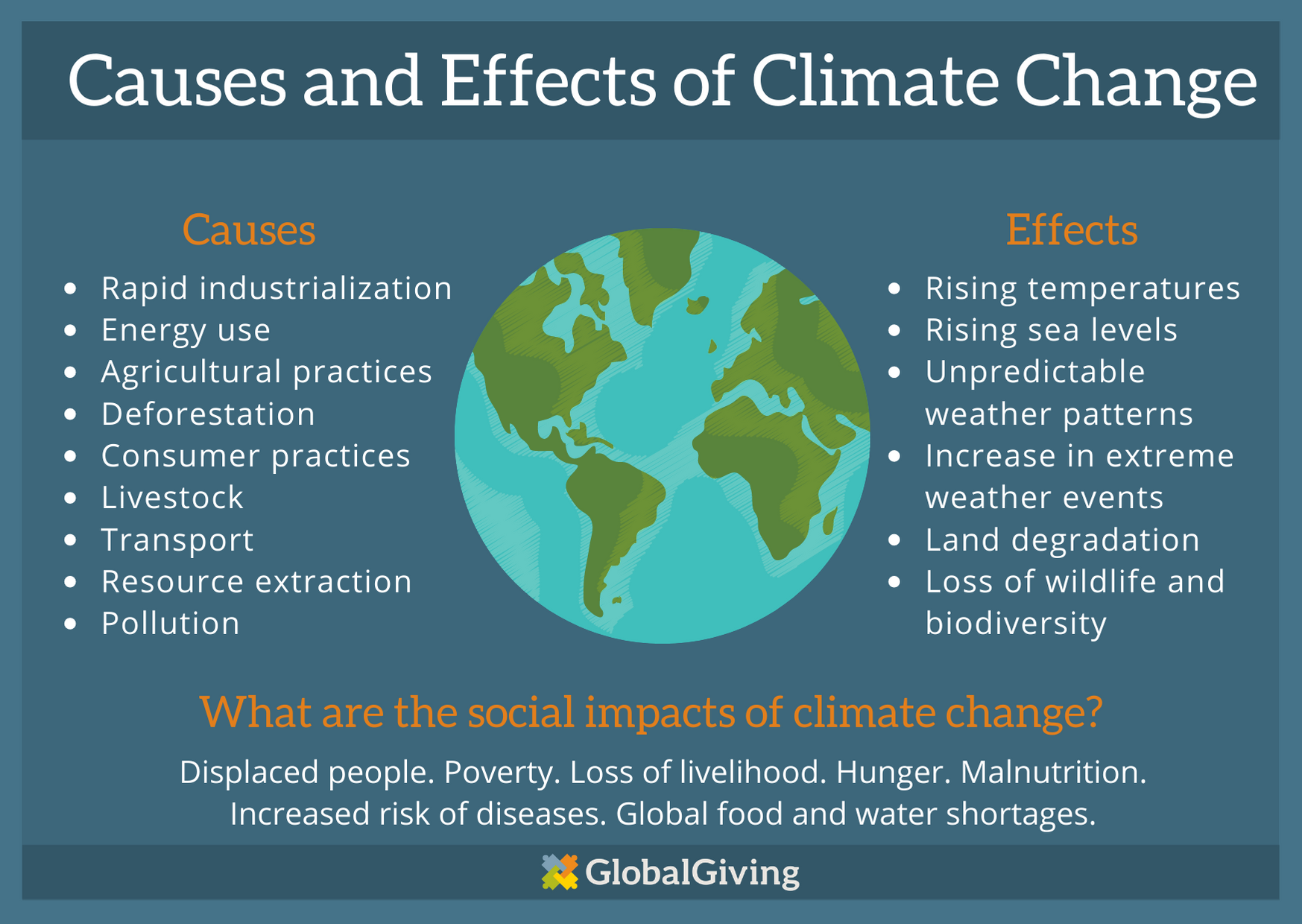
The impacts of climate change and global warming have a snowball effect, generating more and more problems as the crisis unfolds. We must consider the environmental and social impacts of climate change to inform solutions that work for everyone.
To stop the snowball effect, we can invest in communities fighting the impacts of climate change at the local level. Later on, we will list some of the best community-led solutions to climate change. Please consider donating to at least one.
What is climate change?
Climate change is the change in the average weather patterns in a region over a long period of time. One component of climate change is global warming, the long-term heating of Earth due to greenhouse emissions.
What is the greenhouse effect?
Over the past century, changes in human activity have interfered with the natural energy balance of the planet, mainly in the form of burning fossil fuels that release additional carbon dioxide into the air. These gases trap extra heat near Earth's surface causing the planet's surface-level temperatures to rise consistently over recent decades. This is known as global warming.
What are the impacts of climate change?
Climate change's effects range from sea level rise and more frequent extreme weather events to the loss of biodiversity and increased risk of diseases. Climate change impacts every form of life—humans, plants, and animals.
More than 800 million people—11% of the world's population—can already feel the consequences of climate change in their daily lives, including increased frequency of natural disasters, prolonged droughts, and irregular weather patterns.
Who is most impacted by climate change?
Individuals who are already struggling with material poverty are disproportionately disadvantaged by climate change. This is true for a variety of reasons:
1.Three out of four people with low incomes rely on agriculture and natural resources to survive.
Jobs in agriculture, fisheries, aquaculture, and forestry are highly reliant on predictable weather patterns and healthy soil, water, forests, abundant mangrove ecosystems, and more. The race to industrialize countries in the Global South has already left many communities with a renewed agricultural crisis in the wake of deforestation, overexploitation, soil erosion, and industrial pollution.
2. Low-income towns tend to be located in geographically at-risk areas.
For example, informal settlements surrounding many cities in industrializing areas are often located on land that is prone to flooding, landslides, or riverbank erosion. As weather patterns change and extreme weather events increase in frequency and strength, this will disproportionately disadvantage certain communities. People living in rural areas miles away from aid centers, hospitals, and even food and water may struggle to secure resources during climate-related disasters or experience shortages due to the effects of climate change.
3. Poor or non-existent disaster infrastructure in many lower-income areas undermines people's ability to recover after disasters.
Extreme weather events are known to create poverty traps, or conditions linked to health, education, livestock, and assets that perpetuate the cyclical nature of poverty because people need a significant amount of capital to recover from them. As extreme weather events continue to increase in frequency and strength, the unfortunate truth is that climate-induced displacements will present a greater challenge for individuals and families with fewer resources.
4. Racial minorities, Indigenous people, and women already struggle to receive equal resources.
In the U.S., communities of color experience higher levels of lead exposure, higher risks of catastrophic flooding, and lower air quality. In the UK, a government report highlighted that Black children are exposed to up to 30% more air pollution than white children. This phenomenon is known as environmental racism, a form of systemic racism that disproportionately burdens communities of color with health hazards due to policies and practices that force them to live near toxic waste sources.
Indigenous people are more likely to rely on their natural environment for their livelihoods and have limited access to resources due to discrimination. And 70% of people with low incomes around the world are women. Because resource-dependent tasks such as gathering food, collecting water, and sourcing fuel tend to fall on women, their day-to-day lives will be directly disrupted by the onset of climate change's effects.
The individuals and groups most affected by climate change often have the most innovative, equitable, and long-term solutions for their communities.
What countries are most impacted by climate change?
Germanwatch used its Global Climate Risk Index (CRI) to identify which countries were most affected by the impacts of weather-related events between 1999 and 2018. The countries with the highest risk during that period were:
No country is immune to the impacts of climate change. From sweeping wildfires in the U.S. to Japan experiencing three exceptionally strong extreme weather events in 2018, the consequences of climate change are as universal as they are devastating.
How many people die due to climate change every year?
Climate change affects virtually every determinant of health, from clean air and safe drinking water to food and shelter. Changes in temperature and rainfall conditions may influence transmission patterns for many diseases, including diarrhea and malaria.
Climate change is already said to be responsible for an additional 150,000 deaths around the world every year. This estimation does not account for deaths due to extreme heat or pollution, despite outdoor air pollution contributing to more than 4 million deaths every year. Heatwaves killed more than 160,000 people between 1998 and 2017, with 70,000 deaths reported during the 2003 European heatwave alone.
Here are some key predictions about how climate change could impact humanity in the near future:
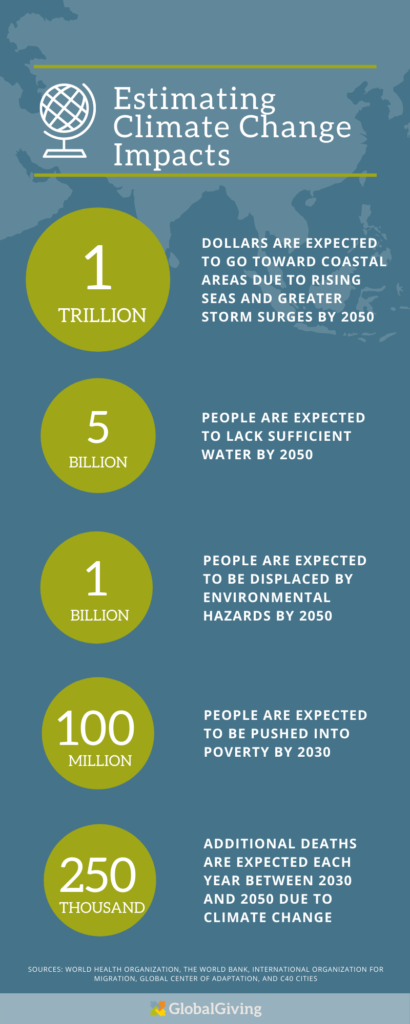
"In the face of disasters, it is necessary to reduce vulnerability and work for the self-sustainability of communities," said Isadora Hastings García from Cooperaction Comunitaria, a GlobalGiving partner working to improve conditions for rural communities in Mexico and strengthen the relationship between society and nature through traditional knowledge. "The future requires us to understand nature as a living entity and not as a resource."
Can we reverse the impacts of climate change?
Yes. Yet, some of the best solutions to climate change are often overlooked. Communities already innovating to fight climate change at the local level understand how the needs of their community are impacted by climate change. But localized approaches continue to be neglected by the broader humanitarian sector, receiving less than 2% of global humanitarian aid.
As we invest in green technology, advocate for green policy, and make small changes to reduce our carbon footprint, we must not overlook the powerful role that community-based approaches have to play in the fight against climate change.
What are community-based approaches to climate change?
Community-based approaches to climate change focus on addressing the impacts of climate change at the local level and preparing communities for more frequent disasters. The best leaders are those who understand the unique needs and capabilities of their communities and will be there for the long haul.
"I hope organizations, governments, donors, and community leaders will invest more significant resources in not only relief but in long-term recovery and disaster risk reduction in the next decade," said nonprofit leader Yotam Politzer.
How can I help reverse the impacts of climate change?
One of the best ways to fight climate change is through a direct monetary donation to organizations working to reverse the threat of climate change in their communities. Here are some of our favorite locally led nonprofits fighting the impacts of climate change that you can help right now.
Using data to protect marine life and livelihoods in Malaysia.
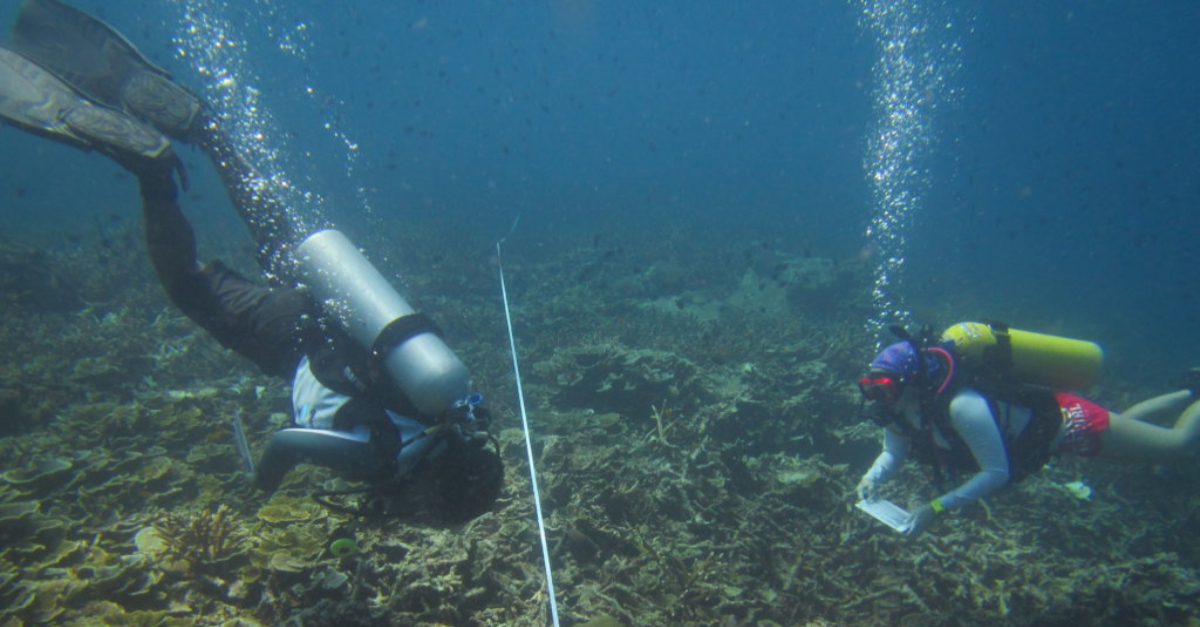
Reef Check Malaysia, tracks, monitors, and preserves the health of coral reefs at more than 220 sites around Malaysia. A fact from this nonprofit: Coral reefs are a carbon sink, meaning they absorb and store carbon dioxide from the atmosphere. Reef Check Malaysia develops reef management and conservation plans according to site-specific needs, promotes sustainable tourism practices, and advocates for policy changes to reduce the human impacts on marine park areas. Learn more.
Democratizing forest rehabilitation in Cambodia.
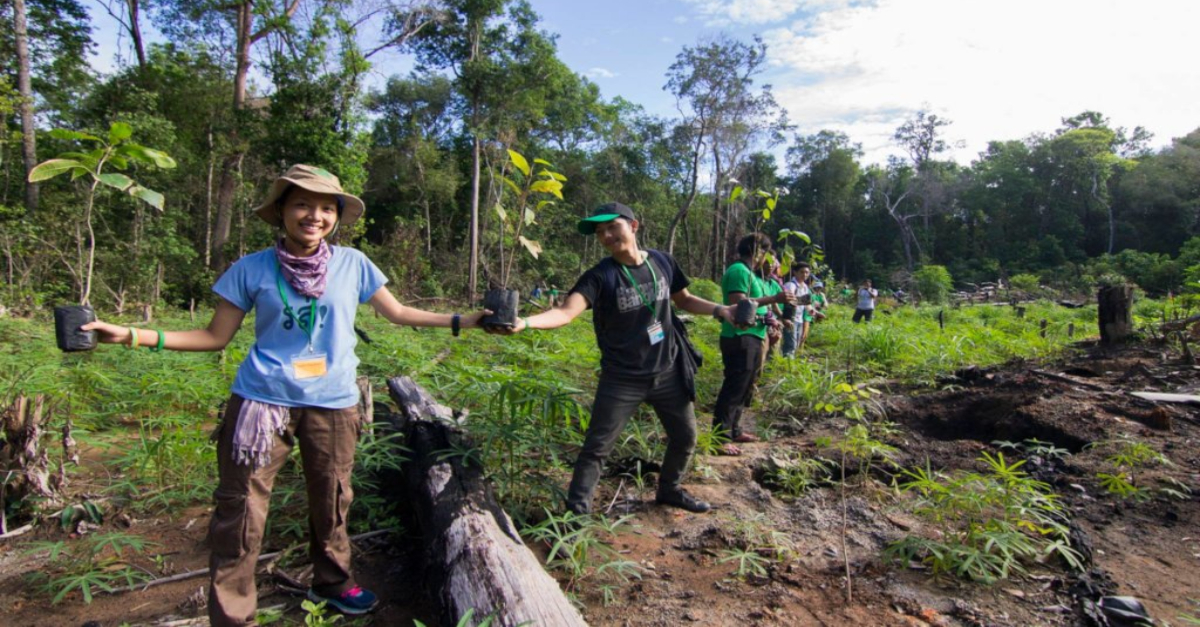
Trees absorb carbon dioxide and greenhouse gases—making them a great tool to reverse the impacts of climate change for local communities. But what happens when illegal land clearing and widespread deforestation tear through a wildlife sanctuary in Cambodia at astounding rates? That's the challenge Peace Bridges Organization is determined to solve. The organization works in the Prey Lang Wildlife Sanctuary, a biodiversity hotspot in the dense Cambodian forest, which happens to be one of the last remaining lowland evergreen woodland forests in Southeast Asia.
To preserve the home of more than 250,000 inhabitants from Indigenous communities and endangered animal and plant species, Peace Bridges Organization is mobilizing a community network to save the trees. From giving community members smartphones so they can report forest crimes to educating young people about reforestation, this organization is helping Cambodians engage in critical conservation efforts. Learn more.
Merging climate and gender justice.
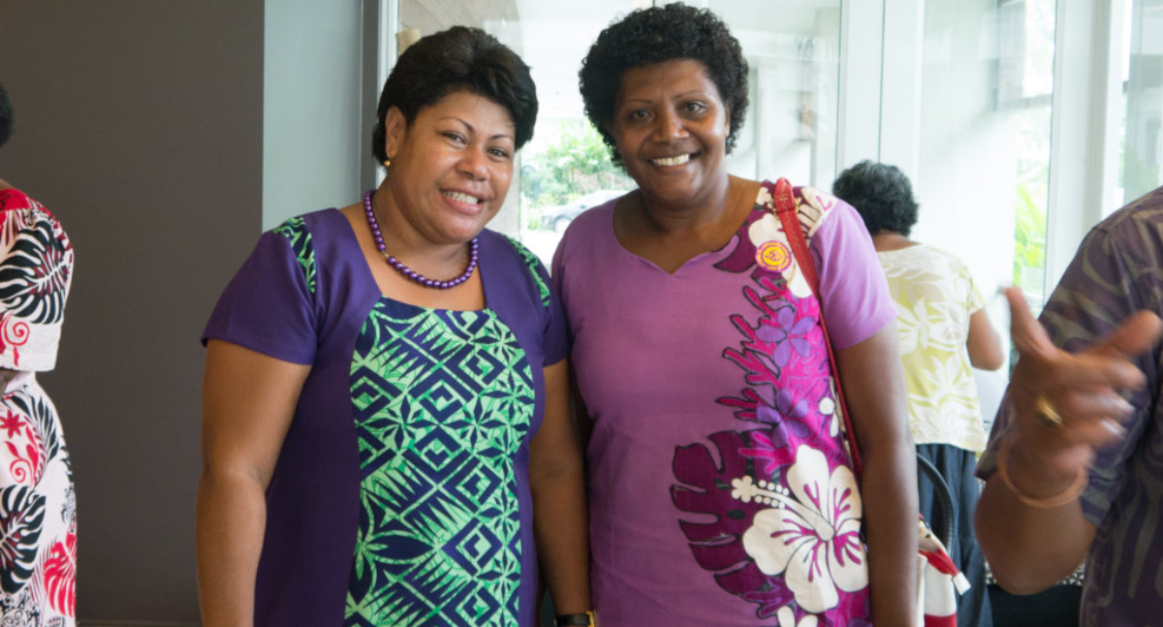
International Center for Advocates Against Discrimination (ICAAD) knows that climate-induced displacement and migration will exacerbate the risk of gender-based violence for women, children, people who are transgender, and Indigenous people. That's why ICAAD weaves climate justice, gender equality, and civil justice into their advocacy work and research to prepare governments and local communities for climate migration. Young leaders will leave ICAAD's programs with the tools and knowledge they need to fight complex problems with complex solutions. Since the onset of the COVID-19 pandemic, ICAAD has hosted a virtual training program in Micronesia and a project to support legal protections for those displaced by climate change and environmental degradation. Learn more.
Bracing their community for increased malaria transmissions.
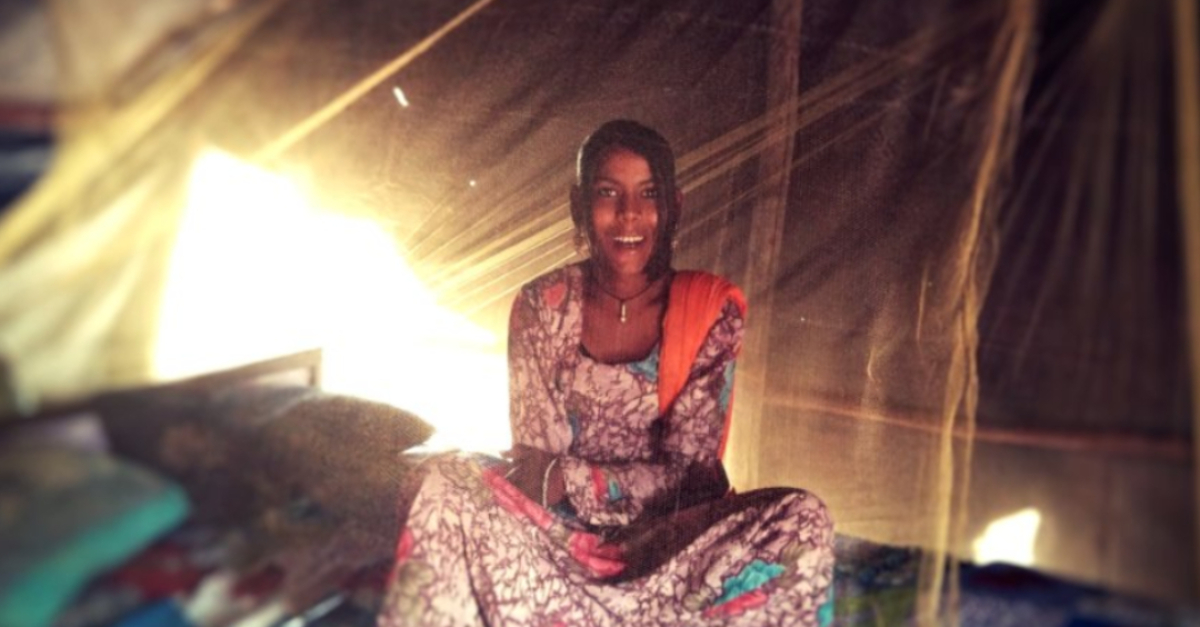
Malaria is already a leading cause of death in many countries throughout Africa, Asia, and Latin America, and malaria transmissions are expected to increase due to shifts in climatic conditions. Warmer temperatures, inconsistent rainfall patterns, and humidity all fuel the parasitic mosquito. To properly address these social impacts of climate change, we need to invest in nonprofits that have been championing connected health and social issues in their communities for years like Rajasthan Samhrah Kalyan Sansthan. Since 1992, the nonprofit has been providing mosquito nets to people in India and raising awareness about preventing malaria infections. Learn more.
Innovating to find eco-friendly solutions to water scarcity in Ghana.
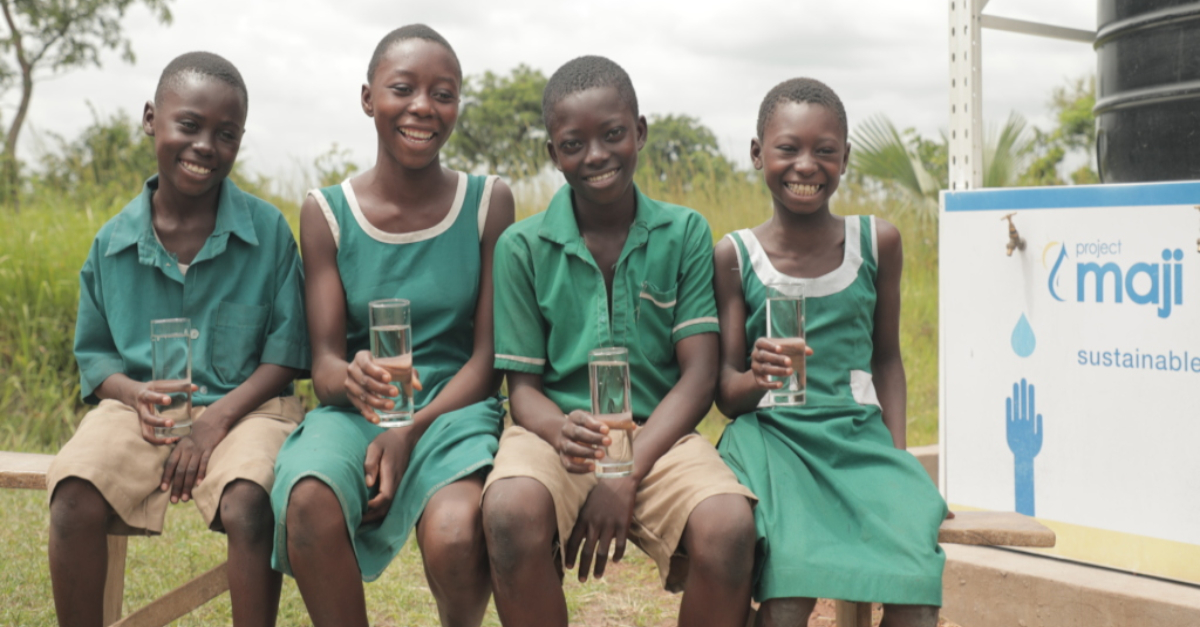
Around 785 million people currently lack access to an improved water supply. By 2050, more than 5 billion people are expected to suffer water shortages due to climate change. Project Maji Foundation is fighting this projection with an eco-friendly solution: solar-powered water kiosks. These kiosks allow women and children to reclaim time spent collecting water and focus on their education, health, and community. Clean drinking water drastically reduces the likelihood of contracting water-borne illnesses, which are known to cause widespread death in communities across Ghana and Kenya. Project Maji has installed 62 solar-paneled water kiosks, pumped more than 100 million liters of safe water, and served approximately 45,000 people in Ghana alone. Learn more.
Support vetted nonprofits fighting climate change with community-based solutions by donating to the Climate Action Fund.
GIVE NOW
Featured Photo: Support Indigenous Botanical Gardens in the Amazon by Alianza Arkana
◊ This article is part of our Big Questions, Better World content series. Click here to tackle more pressing questions about society's biggest issues. ◊
richardsonstrable1991.blogspot.com
Source: https://www.globalgiving.org/learn/cost-to-end-climate-change/
0 Response to "the Cost of Climate Change What Weall Pay if Global Warming Continues Unchecked"
Enregistrer un commentaire